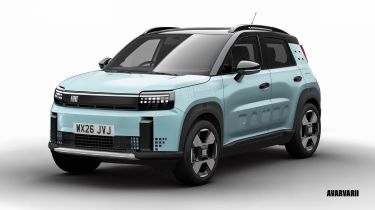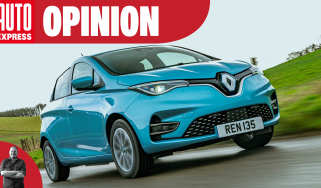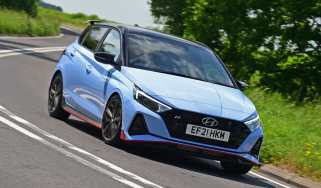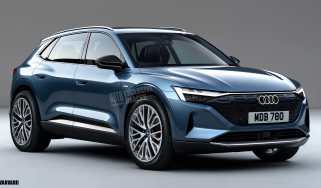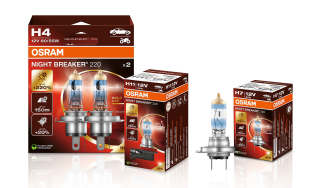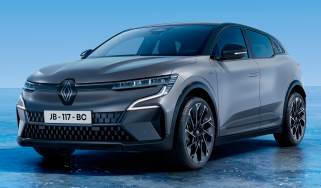New Fiat Pandina will be a low-cost city car for the masses
The all-new ‘mini-Panda’ will reintroduce a budget city car to the Italian brand’s line-up, and our exclusive pictures show what it could look like
Fiat isn’t giving up on the city car class, with the brand’s bosses revealing to Auto Express that it will build a new baby Panda – or Pandina, as it’s known internally. It will join the Grande Panda and its larger siblings we teased last year, and will come with a hybrid powertrain to satisfy European markets.
Fiat’s CEO Olivier François told Auto Express: “We will do an A-segment Panda, maybe not this year, or next, but after that.” The news came during the launch of the Grande Panda, a new generation of B-segment models for the brand. The ‘Grande’ moniker also hints that a smaller sub-four-metre version that’s closer to the mould of the original Panda is on the cards.
The A-segment Pandina will be 3.6 metres long. That’s around 30cm shorter than the Grande Panda, which will rule out it being based on the same underpinnings as most of Fiat’s future models.
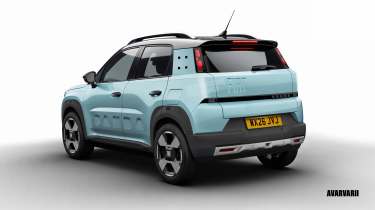
François told us: “The Smart Car platform was perfect for Fiat, but I can’t go any smaller than four metres, which is Grande Panda.” The platform is Fiat owner Stellantis’s own, and nothing to do with the Smart brand.
Instead, Fiat will use a modified version of the platform that’s currently found beneath the all-electric 500e. This contentious architecture was designed and engineered specifically for the new 500, but was created by Fiat in something of an engineering silo before the merger with Group PSA to form Stellantis. This has made the platform largely incompatible with other Stellantis platforms, limiting its potential usage, which until now has been restricted to the 500.
Compounding this issue were the relatively flat sales of the new 500e. And with the old petrol 500 out of production due to emissions regulations, a decision was made to retro-fit a new, small hybrid petrol powertrain to the 500e platform, dubbed Ibrida (Italian for hybrid).
The previous 500 Hybrid was initially introduced back in 2007 and shared its underpinnings with the even older second-generation Panda that appeared in 2003.
François was thrilled by the prospect of the new 500 Ibrida, telling us: “Customers will get a beautiful, new, modern 500 with the new Ibrida. We needed to replace the old 500. You can only keep putting lipstick on a pig for so long, so we’re excited about bringing this new 500 to a much wider audience.”
But maybe its greatest significance will be facilitating the creation of the Pandina. By choosing to build the
500 Ibrida, Fiat has also brought a new five-door city car back into consideration, which would help to pay off the investment on the platform across three models, rather than just the one.
We already have a good idea of what powertrain to expect in the Pandina as a result, with both it and the 500 Ibrida set to feature the well used 1.2-litre three-cylinder petrol engine with a small hybrid unit and standard-fit dual-clutch automatic transmission. This set-up is also found in the hybrid variants of the Grande Panda and its Smart Platform cousins, and in those models it produces around 100bhp – a figure we expect to be replicated in the forthcoming Pandina.
But Fiat is very clear about all the pitfalls of building a modern city car, with significant challenges as the market continues to evolve. François said: “A-segment cars in Italy are a must, but all cars have to be global and there’s just not that much of a market for cars of this size elsewhere, which makes it a challenge.”
In order to make the sums work, the Pandina will be designed to be simple and cost-effective at its very core. While the new model is not aesthetically driven by the Centoventi concept of 2019, François told us, “It will have the same philosophy as the Centoventi. It needs to be simple, innovative. What can we leave out? What do we actually need inside? This will help keep the costs down.”
This ethos will be paired with the same playful, thoughtful design language Fiat has created under the leadership of François Leboine. But given that the smaller Pandina is on the 500e platform, there will be limitations to the proportions.
Where the Grande Panda’s relatively wide stance was a bonus derived from being the smallest Stellantis model on that platform, the Pandina will be narrower. As our exclusive images show, the new Pandina will be boxier and more upright, in order to fit both rows of doors within the 3.6-metre length.
Uncoloured plastic trim and mouldings will be used to deal with the bumps and scrapes that are common in tight European cities, while also reducing the amount of painted surfaces. Robust steel wheels will almost certainly be used on entry-level models, with higher-spec alloys also small, and not likely to exceed 17 inches in size.
Fiat’s ‘pixel’ elements and use of clever debossed badging will likely feature, plus the Pandina is also expected to offer the bright colours, recycled materials and clever little design details that make the Grande Panda such a charismatic car. Fiat knows it’s onto something with its new design language, so it is inevitable that it will build on what makes the larger models work so well.
While there’s little chance of a Pandina 4x4 featuring on the product plan due to engineering constraints, the new cars could still showcase some of the rugged styling cues that such a model might feature.
There’s also not much appetite to create a tiny hot version of the Pandina in the mould of the previous Panda 100HP, according to Fiat. This tiny warm hatch gathered a passionate customer base, but despite having the Abarth brand to market a hot Pandina under, the newcomer will remain firmly focused on usability and accessibility – even though it’s understood that Abarth has already whipped up a few explorative sketches for Fiat’s executive team.
The new Pandina will join the upcoming Volkswagen ID.One and Renault Twingo in the next generation of compact, clever and efficient A-segment models. The key difference is that at least initially, the Pandina will also offer that hybrid powertrain, bringing costs down compared with its all-electric rivals and offering a choice to customers who aren’t yet able or willing to switch.
However, the fact that it shares its core underpinnings with the all-electric 500e will mean that if markets warm back up to EVs, or legislation forces Fiat into it, the Pandina will be ready and waiting to accept a BEV powertrain with relatively little effort or expense.
Regardless of powertrain, the A-segment is still a difficult place to make a profit, and François was blunt in saying: “In order to make money, we’ll need to sell huge numbers, but I’m confident that we will do that.”
Did you know you can sell your car through Auto Express? We’ll help you get a great price and find a great deal on a new car, too.
Find a car with the experts

